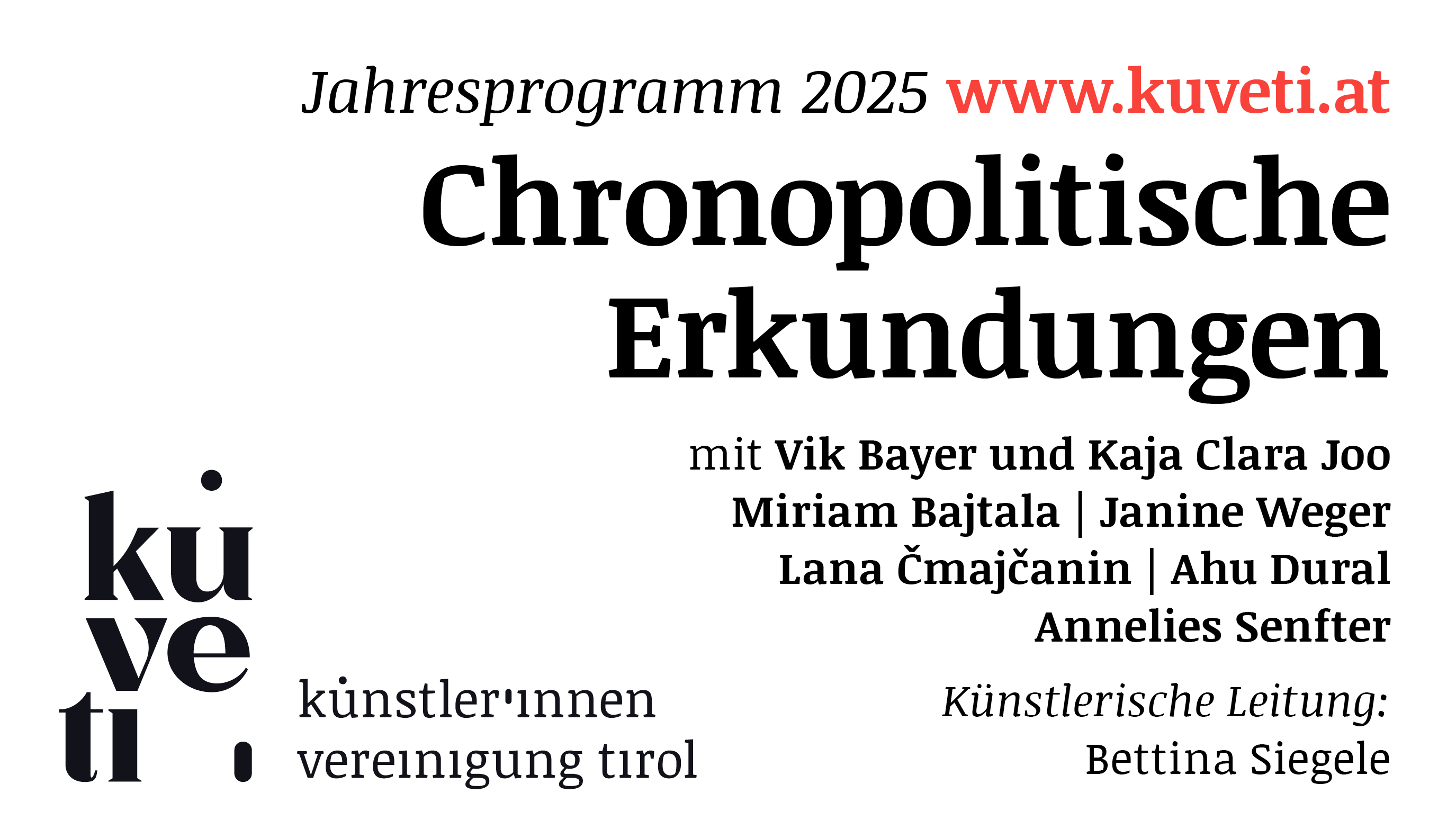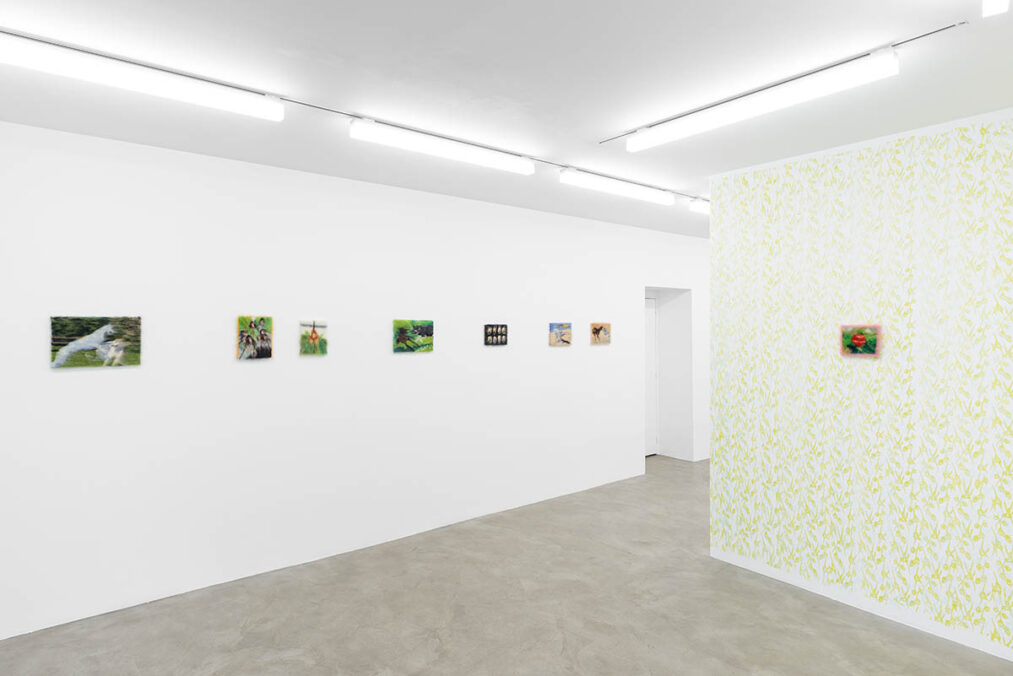
The textiles presented use mohair yarn embroidered through printed found photographs, or AI-generated images. These punctured images are adhered onto needlepoint canvas, the resulting mohair imaging of the natural world achieves intricately detailed studies of birds, plants, and animals which are then vigorously brushed into abstracted motion. The Austrian artist’s first solo gallery show in France, the series of canvases presented in Mon seul désir demonstrate a compulsive creative practice. Negating art’s contemporary temporal economies, the methods used here render the artistic process an intricate layering of meticulous repetition carried out over hours, days and weeks.
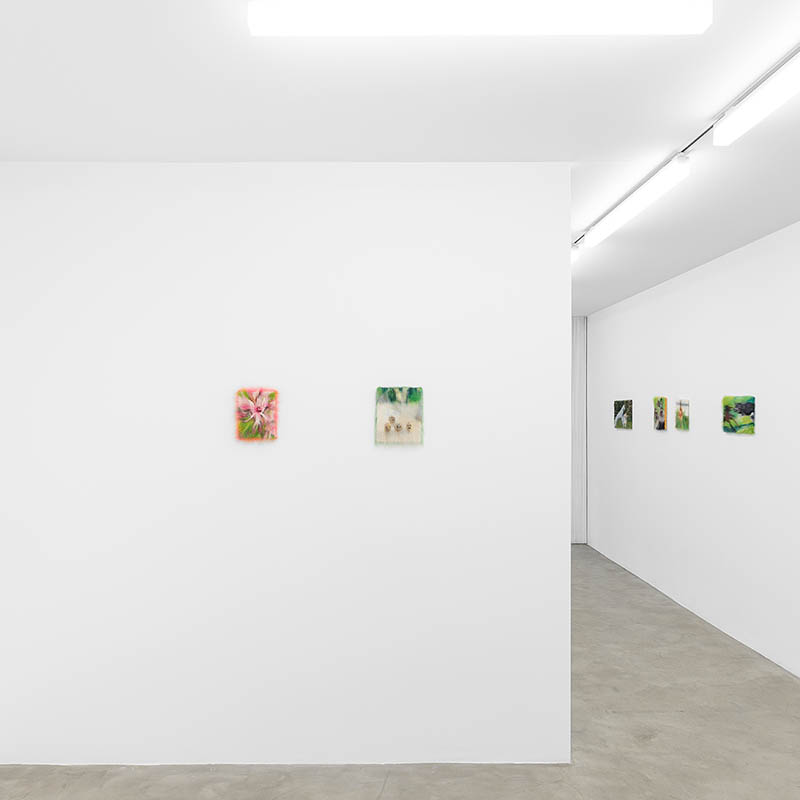
This process runs in contradiction to Szakats’ past life as a fashion designer, of deadlines, delegation, and piecemeal production – here the artist’s eye and hand is present throughout the shaping and fabrication of the objects. A long, meditative method of creation that has a sense of the transcendental in the hours of repetitive piercing of colours into canvas forming blocks, then shapes, then formal interactions, which are then thrown into nauseating animation by the mohair brush. Szakats stretches her needlepoint canvases over handmade frames. Over the edges of the image, slipping down the sides are sections of colour, bright red, green, or black. The brushed yarn drags these liminal blocks of colour out from the canvas, giving framing to the works in splayed strands across the surrounding white of the wall around them. The effect of the brushed textile gives a sense of vertigo; a rushed still from a rapidly unfolding video, a sharp zoom into detail. It generates a sense of formal collapse in which the frozen moment of the artwork is caught in transition from an unseen past, to an unknowable future; a discursive representation of the passage of time.
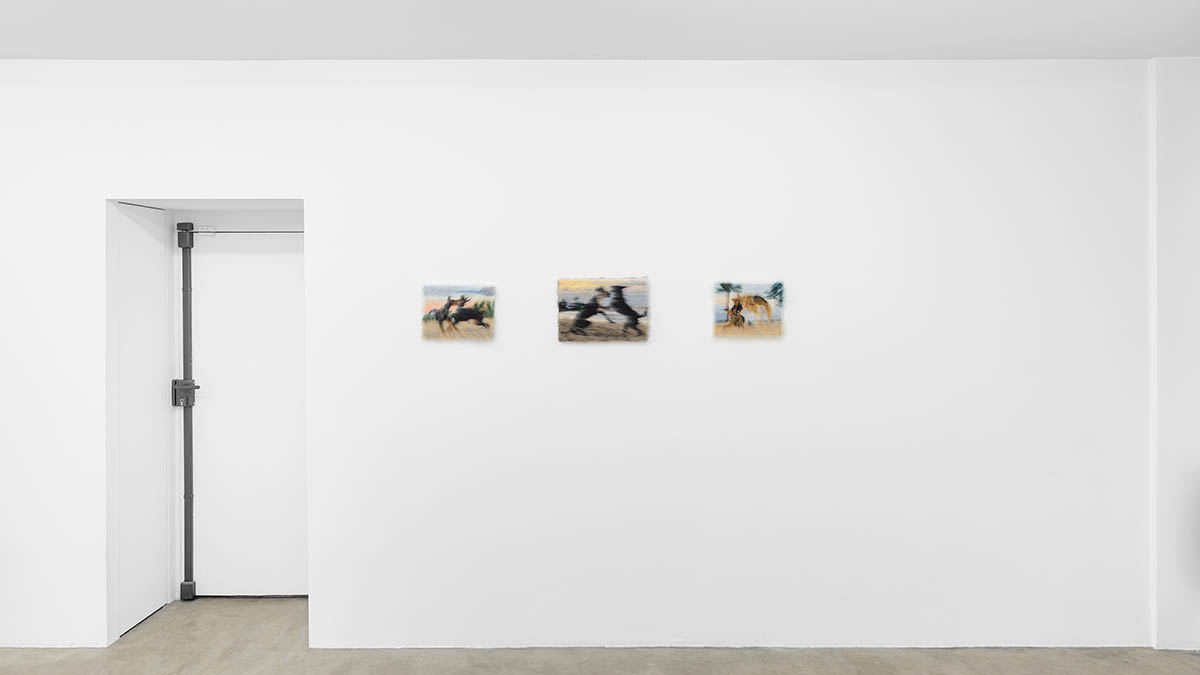
Exhibition view. Maria Szakats, Mon seul désir, GALERIE CHLOE SALGADO © Gregory Copitet 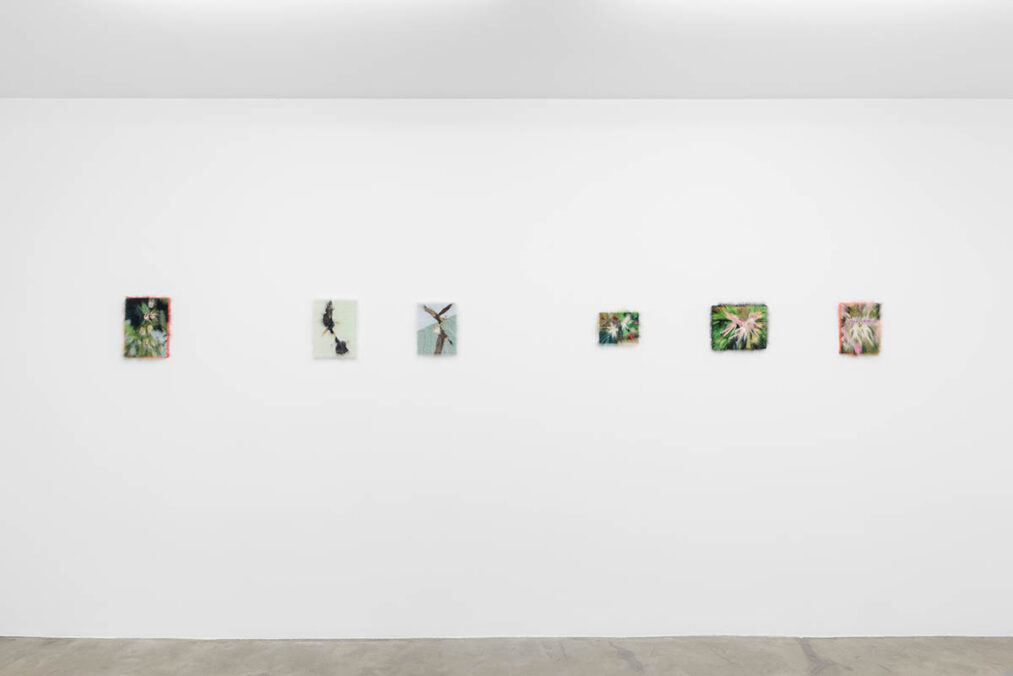
Exhibition view. Maria Szakats, Mon seul désir, GALERIE CHLOE SALGADO © Gregory Copitet 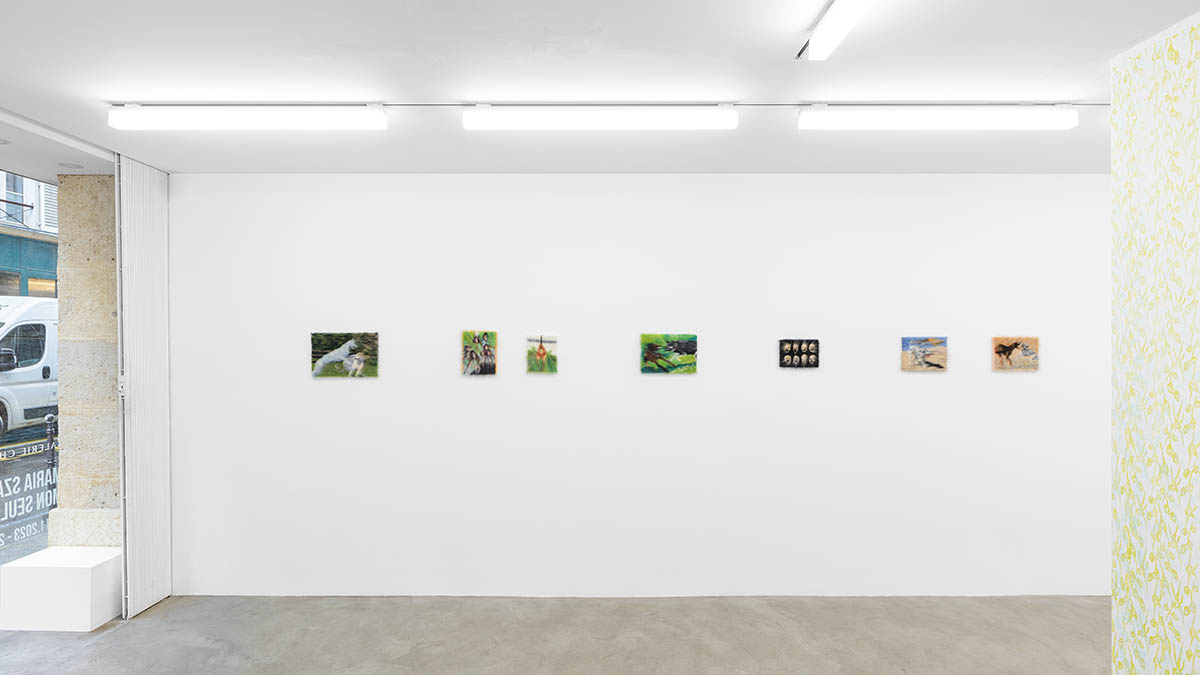
Exhibition view. Maria Szakats, Mon seul désir, GALERIE CHLOE SALGADO © Gregory Copitet
The canvases depict allegorical engagements with human nature, following the traditions of medieval tapestry, where birds, dogs, and plant-life bear the brunt of narrative movement upon the textile. In doing so they do not present a dehumanised image of the world, but the eerie splitting of human interiors into an environment they have populated, broken, and yet persists around them. The smeared natures mortes bring the viewer to an interpretative pareidolia, for example in the morbid features of the monkey face orchids present in Monkey Face II, or snapdragon seed pods depicted in Snap Dragon II, which when dried take on the aspect of rotted skulls; the desiccated flesh curling up from the eye sockets and emptied mouths. These images, and this repetitive artistic process of hand and eye, is again present in the snapdragon skulls that leer out from printed lengths the artist has rolled onto the gallery walls.
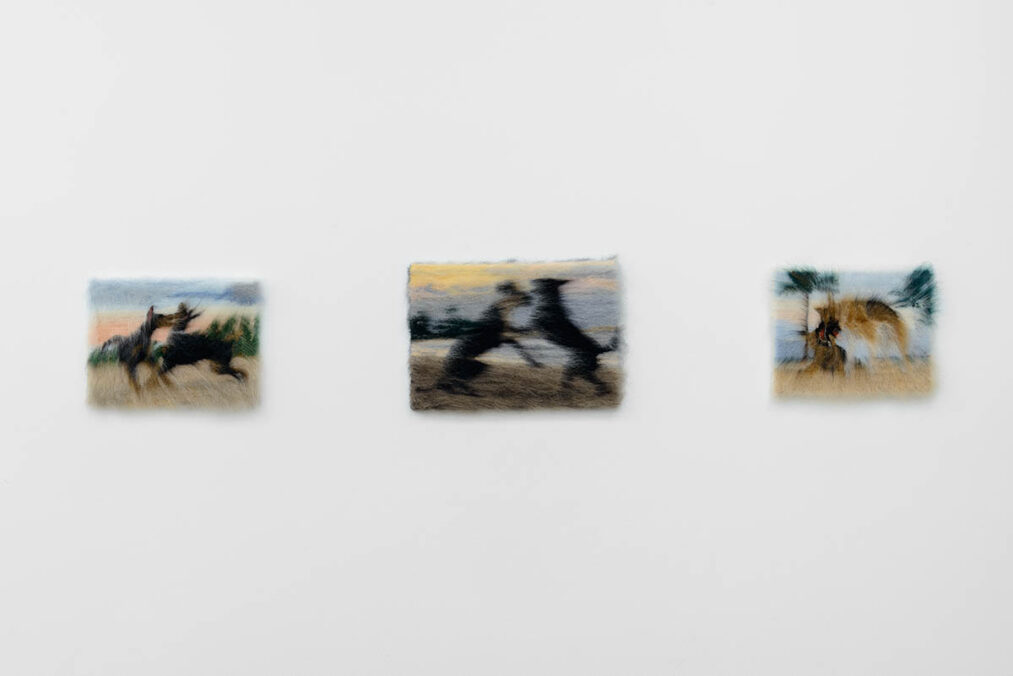
The title of the show is derived from an inscription found in the series of six medieval tapestries named La Dame à la licorne produced around 1500 and held at the Musée de Cluny, Paris. Against a millefleurs background, the tapestries present an idyllic and contemplative series of natural scenes populated by allegorical plants and animals. At the centre of each is a drifting island with the central figure of the courtly woman, her lady-in-waiting, and the lion and unicorn that represent the family that commissioned the tapestries in a garden setting. The tapestries each depict one of the five senses, and the sixth bears the inscription “mon seul désir,” the sixth sense, the heart; the externalised projection of human interiority encapsulated in a sort of Bataillean “beloved.” The unicorn, an aggressive and violent mystical creature, is drawn there and tamed by the purity of the woman at the centre of the series, whereas the bodily senses depicted in the others are presented as an empirical world to be eschewed. This woman is missing from Szakats’ reinvention of the symbolism of these wall-scale tapestries. The allegorical surroundings are clipped from their engagement with the missing central figure and presented on small scale; miniaturised. The sexualised purity of the woman and the luring of the large-horned unicorn from the forest is absent in this rendition, and the audience is prompted to take on the position of these reflexive absent rückenfigurs; it is the viewer that is here thrust into the centre of the allegorical anthropomorphism that surrounds them.
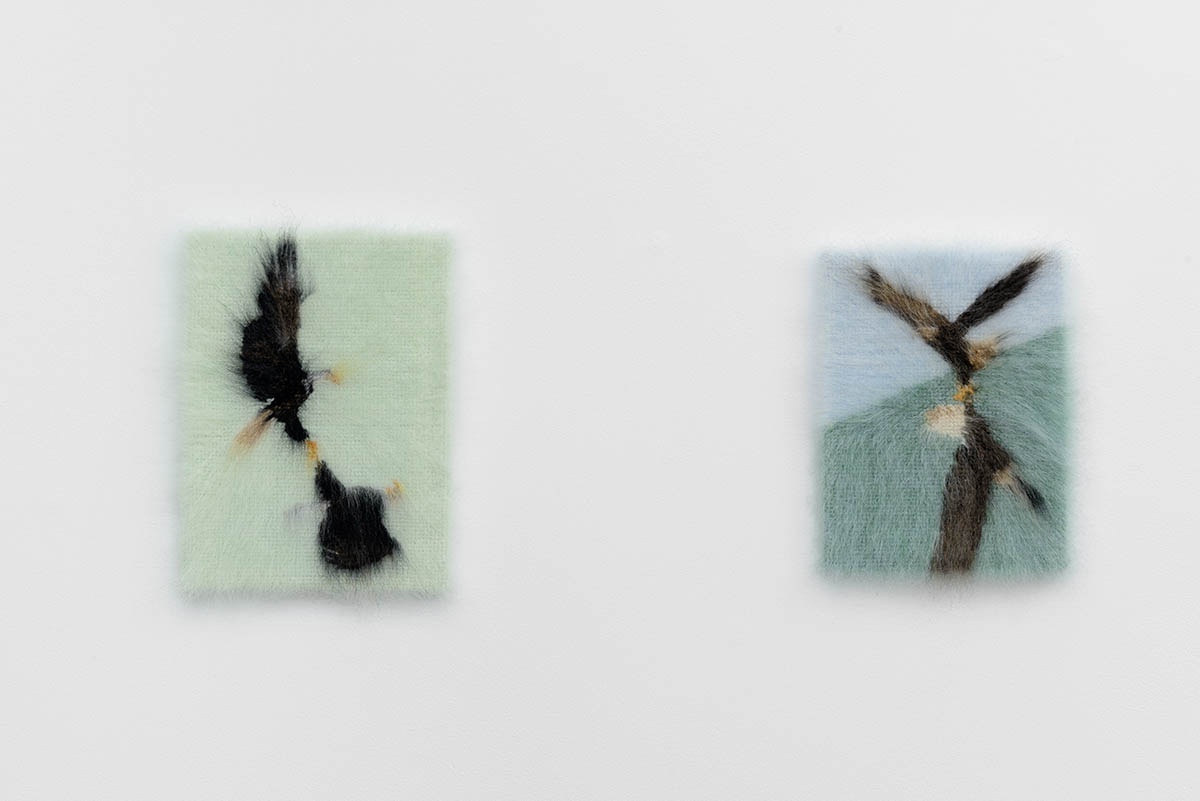
In the absence of the human body, the human interior is fractalized, and split into the allegorical motifs that are spread in miniature across the canvases of this exhibition. The overtones of sexuality present in the work of inspiration are here redeployed, and more subtly explored. A juxtaposition is found in the depiction of orchids, which though are now often deployed as representations of the vulva, from the Greek, were named in antiquity for the perceived resemblance of their tubers to male genitalia. Further classical interpolations, of Eros and Thanatos are a recurring seam in the motifs of the works, with canvases depicting dogs fighting, their features melding in the collapse of their bodies given by their AI-generation.
Elsewhere, Eagles Spinning presents two eagles caught in the mating ritual of the death dive, the brushed mohair drawing out the inertia of the spiralling plunge, and the impending moment when the birds will release one another, or hit the ground talon-in-talon. Bringing into tension artisanal techniques, new approaches to the material of textile, and a reinvented approach to the imaged matter of human nature displaced into the environment that encompasses them, the works presented here give texture to the ephemeralised photographic lens as extension of the artist’s eye. Similar to what is found in the fundaments of painting motion, the action is dictated by the movements of the artist’s hand, and the stroke of the brush.
Exhibition: Maria Szakats, Mon seul désir
Exhibition duration: 18 November – 23 December 2023
Address and contact:
Galerie Chloé Salgado
61 Rue de Saintonge, 75003 Paris
www.galeriechloesalgado.com



